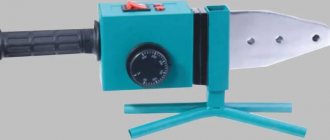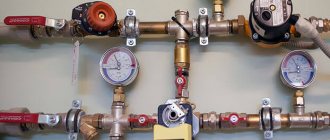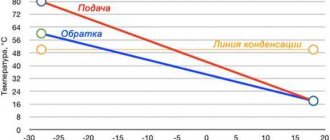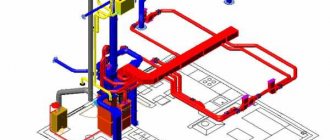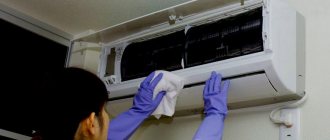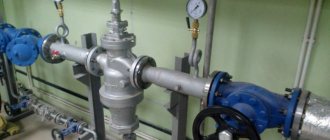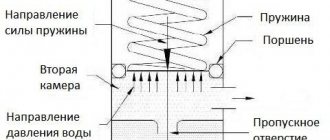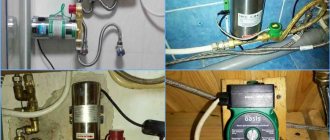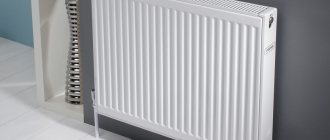Work of specialists
This is the best way out. Companies that spray foam foam use high-power foam generators equipped with a vortex chamber, where a pressure of up to 140 atm is created. The finely dispersed mixture resulting from the chamber exits forms a quickly forming layer of insulation.
Application of insulation using the installation is simplified to the extreme. First, you must thoroughly clean the walls or structures intended for insulation from debris and peeling paint. If the surfaces are not made of metal, in case of direct contact with water, you should wait at least 24 hours so that the moisture that has penetrated the outer layers of the material evaporates completely. Windows, doors and surfaces that it is desirable to protect from polyurethane foam are protected with polyethylene, secured with masking tape.
Having cleaned and dried the surfaces, you can proceed to the spraying itself. Wear a face-fitting respirator and safety glasses. A special overall is used to protect clothing.
Then they begin to assemble the installation. First, place the nozzle on the spray gun. Using an installation key, hoses are connected to the containers, depending on their color marking. After this, the hoses are connected to the gun, and the installation is ready for use.
Density and scope of application of polyurethane foam
Depending on the raw material, you can obtain thermal insulation foam with a density from 14 to 80 kg/m3. In other words, the increase in volume occurs from 7 to 12 times. Polyurethane foams with a density of up to 25 mg/m3 are used in structures under siding, under paneling, under plaster, under cladding, “in masonry” - in a word, where they are protected from external mechanical influence. Polyurethane foams with a density of 40-50 do not require additional protection (if the aesthetics of the object allows) - only painting. Walls and ceilings are insulated with such materials. If thermal insulation of the roof in use is required, it is recommended to use foam with a density of 60-80 kg/m3.
Insulation device for a frame house from the outside
The order and sequence of operations when insulating a frame house from the outside is almost no different from the method of insulating it with polyurethane foam spraying from the inside. When installing insulation from the outside, you only need to comply with the following requirements regarding work conditions:
- the optimal temperature range is from +10 to +40 °C. Work is also carried out at lower temperatures, but the consumption of materials increases significantly;
- wind speed is limited to 7 m/sec, since at higher speeds the spray cone is carried away from the gun;
- work should be carried out in dry weather. If it starts to rain during the work, it should be interrupted and resumed only after the surface has completely dried;
- After spraying a layer of polyurethane foam and checking the quality, it is necessary to immediately carry out the outer cladding to avoid exposure to solar ultraviolet radiation, which destroys the material. Otherwise, you should immediately paint the surface of the applied layer with special weather-resistant polymer paints that are also resistant to ultraviolet radiation.
Insulating the walls of a frame house from the outside
Safety precautions when performing work
The finished polyurethane foam is environmentally friendly during operation, but the components for its production are toxic, so safety precautions should be observed when carrying out work.
Operators spraying polyurethane foam must work in protective suits with hoods, protective masks with respirators, rubber gloves and boots that prevent the polyurethane suspension from getting on the skin, eyes and respiratory organs. Work is not allowed in the presence of persons without protective equipment in the room or near the installation. It is also not allowed to carry out work near sources of open fire.
The components for obtaining the PU foam working mixture must be stored in closed containers in rooms equipped with ventilation.
Types of sprayed polyurethane foam for insulation
Semi-rigid and rigid polyurethane foam is used for thermal insulation.
Semi-rigid has an open cellular structure and lower density than its rigid variety. Due to the open-cell structure, the material is light and breathable. Most often, a type of polyurethane foam with a density of 8-20 kg/m3 is used in the insulation of frame houses, buildings made of timber, and rounded logs. When applied, semi-rigid polyurethane foam expands up to 100 times in volume, depending on the manufacturer. Among the undeniable advantages of the material:
- excellent noise insulation parameters;
- higher thermal conductivity coefficient compared to its rigid counterpart.
However, the open cell structure makes polyurethane foam unsuitable for external thermal insulation and use in areas of contact with moisture, since it is not strong enough and absorbs water. If it is necessary to install thermal insulation in places with high humidity levels, additional vapor and waterproofing must be provided.
The components of rigid polyurethane foam have a connected structure of closed, isolated bubble cells. The thermal conductivity coefficient of closed-cell polyurethane foam varies between 0.019-0.04 W/m*K, which makes it the most effective thermal insulator on the modern market. The material is used for external and internal thermal insulation of rigid structures made of concrete, brick and other vapor-tight materials.
The density of construction closed-cell polyurethane foam ranges from 25 to 600 kg/m3. Good adhesion to all building materials of any configuration and technical characteristics of rigid polyurethane foam have ensured its demand not only in construction, but also in such rather narrow industries as oil and gas, refrigeration equipment production, etc.
Modernization
The installation will be equipped with a data collection and transmission system, which includes the collection of information on fuel consumption, steam condition, average temperature and pressure, and boiler efficiency. Data transmission is carried out via a radio modem to the built-in flash memory of the enterprise control room PC.
Additionally, a system is installed to track and record the operating time for carrying out maintenance-1, maintenance-2, PPO and PPR on the vehicle mileage in km. The system warns the operation service in advance about the schedule of work being carried out, both on the upper equipment and about the condition of the vehicle’s internal combustion engine. A water treatment system and an autonomous diesel engine allow the use of untreated water and the operation of the installation independently of the vehicle chassis, significantly reducing the downtime of the installation and increasing its mobility.
With the correct selection of the operating mode, based on operating conditions, pipeline treatment, grouting work or other purposes, savings in fuel and lubricants of up to 40% are achieved. At the request of the customer, adjustments are made to the software to perform special types of work related to new technologies.
| See also: Steam installation PPU 1900/100. Development history, operating principle Photo gallery “Steam installation PPU 1900/100” Consumer Reviews |
Technologies for continuous application of polyurethane foam insulation for pipes
Today, there are a number of technologies for applying polyurethane foam thermal insulation (PUF insulation), incl. for pipe products (PPU pipe). Continuous application technologies occupy a special place among them.
Continuous application of polyurethane foam insulation to pipes includes two stages (two stages). The first is the stage of applying the foam composition to the supporting pipe. The second is the creation of an outer shell (if we are talking about a pipe shell made of polyethylene, it is created using extruders, and if we are talking about a protective shell made of galvanized strip, it is wound) on the surface of the formed layer of polyurethane foam.
The organization of continuous production of this type of product such as polyurethane foam pipe imposes special requirements, in particular, on the reactivity of the composition (a mixture of polyols and isocyanate), the schedule of changes in viscosity during the polymerization process and the curing rate. These parameters are regulated by changing the composition (chemical modification) of the polymer composition.
Technologies for continuous application of polyurethane foam pipe insulation provide a sharp increase in productivity and a reduction in the final cost of production (if we are talking about the production of large volumes of polyurethane foam pipes of the same type and standard size), incl. by reducing the overflow and thickness of the polyurethane foam layer. At the same time, reconfiguring the technological process - for example, switching to pipes of a different diameter - requires significant effort, financial costs (capital investments) and time. This circumstance makes continuous production technologies less mobile compared to traditional ones.
There are two basic technologies for the continuous application of polyurethane foam insulation: casting and spraying.
The use of the first technology for insulating polyurethane foam pipes (casting method) involves applying the reaction mixture inside a kind of “package” of polyethylene film. An insulated support pipe is also located inside the “package”. The resulting “assembly” passes through a circular thermal section, where the required temperature is maintained. This is where the foam expands and hardens; The polyurethane foam layer acquires the desired shape and mechanical properties. After this, a polyethylene shell is extruded onto the surface, and the finished PU foam pipe is cut into pieces of a given length.
This technology is ideal for the production of flexible polymer pipes supplied in coils, because does not impose restrictions on the length of the pipe. At the same time, it can only be used for the production of polyurethane foam pipes with a small or medium diameter. This limitation is related to the curing rate of the polyurethane foam layer.
When using the second technology (spraying), the composition is sprayed onto a rapidly rotating support pipe. Its advantage lies in the formation of a very homogeneous layer of polyurethane foam, which allows reducing the consumption of materials, as well as the possibility of applying several layers of polyurethane foam, i.e. obtaining insulation of almost any thickness. The use of continuous spraying technology is preferable for the production of large diameter polyurethane foam pipes.
EQUIPMENT FOR SPRAYING POLYURETHANE FOAM
Century of Polymers LLC offers installations for spraying polyurethane foam - all this is already ready for work.
CATALOG OF EQUIPMENT AND MATERIALS FOR POLYURETHANE FOAM
In Russia there are several dozen equipment manufacturers, plus imported brands are well represented in our country. Therefore there is a problem of choice. What to buy so as not to regret later?
Century of Polymers LLC has accumulated very rich experience in operating machines for applying polyurethane foam. Among us there are those who stood at the origins of the production of domestic devices.
We also remember such models as: Truzioma, Pena-9M, Ya10-FNG, Pena-98N10, Pena-15E, Pena-R21, etc.
We recommend reading on ruppu.ru about the history of equipment for spraying polyurethane foam in the USSR. From this article you will learn that PPU received its “start in life” thanks to the May plenum of the CPSU Central Committee and that for several years the assembly of the PENA-9 device for the entire country was carried out by one research institute from Vladimir.
We know and understand the equipment well because we have been doing spray polyurethane foam insulation for the last 20 years. We tried about a dozen cars, both domestic and imported.
We provide thermal insulation services with polyurethane foam at customer sites, and are ready to perform work in the Moscow region and Siberia. Therefore, we have something to say and show in terms of PU foam spraying equipment.
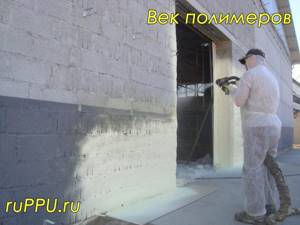
For those who want to learn how to spray polyurethane foam on their own, Century of Polymers LLC offers equipment, components, and related consumables (solvents, lubricants, glue, primers, etc.).
We do not manufacture polyurethane foam spraying machines. But we are ready to consult, advise and supply equipment that we operate ourselves. We are ready to bear warranty obligations without worrying about the company’s reputation.
The price will be the same as that of the manufacturer or distributor (if we are talking about imported units). It’s up to you to decide where to get it: directly from the factory or from us. We will tell you about the pros and cons of each model before purchasing, because... We ourselves have worked before or are currently working on such equipment.
After communicating with us, of course, call the manufacturer. Probably, you should choose someone who knows the product better and who will help with operation after purchase.
We know firsthand and not in theory. We are practitioners. We have been operating such installations ourselves for many years. We studied them inside and out. We took them apart and put them back together many times. Therefore, we will help.
And, by the way, we have one more interest, so that everything works fine for you. We also specialize in the supply of polyurethane chemicals and are interested in our customers constantly purchasing high-quality and proven PPU spraying components from us.
Balcony insulation technology
Insulating the balcony with polyurethane foam
Insulating a balcony with polyurethane foam will not take much time due to the small area of the room. Do-it-yourself thermal insulation is carried out from the inside of the balcony, since special equipment is required for external work.
During the insulation process you will need:
- aluminum profile for sheathing;
- screws and plastic dowels;
- level;
- drill;
- spray installation;
- insulation components.
Step 1. Surface preparation
Peeled or loose coverings are removed from the ceiling and walls of the balcony, and the corners and joints around the perimeter of the windows are checked. If there are deep cracks, they can be filled with pieces of foam plastic and sealed with putty. All small gaps and seams will be filled during the spraying process. There is no need to level or sand the surfaces.
Step 2. Making the sheathing
Spraying of polyurethane foam
An aluminum profile is screwed to the walls and ceiling in vertical rows. Next, strengthen the sheathing with horizontal jumpers in increments of about half a meter. Be sure to screw the profile around the perimeter of the window and doorway. It is recommended to cover the window, door frame, and communication pipes with plastic film, since the insulation quickly sets and is very difficult to clean.
Step 3. Spraying insulation
Insulation of balconies
Open the box of polymers and thoroughly shake the components. Connect hoses and a gun to them, select a nozzle with a narrow torch. First, polyurethane foam is blown into the cracks, the seams between the walls and ceiling are sealed, and the joints around the openings are treated. Then the nozzle is changed to a wide one and the insulation is sprayed onto the ceiling. Application should be uniform, the gun should be held at the same level and moved smoothly along the surface to be treated.
After insulating the ceiling, they move on to the walls; if there are noticeable defects, depressions, polyurethane foam is applied in a thicker layer, leveling the working plane. On smooth walls, the insulation layer should be as uniform as possible. After spraying, carefully remove excess material from the sheathing.
Insulation of loggias
Step 4: Finishing
Drywall, plastic or wooden panels are attached to the profile on top of the thermal insulation layer. If finishing with decorative plaster is planned, a fiberglass reinforcing mesh is attached to the surface, on top of which plaster is applied.
The use of polyurethane foam has undeniable advantages:
- When spraying, a heat-insulating layer is applied to any surface with any configuration. You can pour polyurethane foam into any cavity, the volume of which corresponds to the portion of the components supplied;
- advanced polyurethane foam spraying technology ensures the shortest possible work time;
- When sprayed, the layer turns out to be complete, without joints, along which the coating is destroyed over time. When pouring, the entire cavity space is filled with a homogeneous material;
- in the absence of mechanical damage, service life is at least 50 years;
- application in a wide temperature range (from -150C° to +140C°);
- thermal conductivity coefficient of polyurethane foam (0.027 – 0.028) W/mK;
- the material is biologically neutral, resistant to microorganisms, mold, rot;
- belongs to the group of refractory materials and does not support spontaneous combustion;
- water absorption of material with a surface film at a humidity of 98% in 24 hours – 0.04% or 2g/m2;
- This material is environmentally friendly, odorless and does not affect human physiology. You can spray a layer of polyurethane foam under the cement screed or plaster.

Scheme of insulation of building facades with polyurethane foam
Polyurethane foam can be applied both to a concrete screed and to an existing waterproofing surface made on the basis of roofing felt coatings. The foam coating itself has excellent adhesive properties.
Laying on top of the existing insulating material, PPU additionally insulates the roof and covers it with a continuous, seamless, waterproof carpet on the surface of any form of complexity. The spraying process produces a seamless thermal and waterproofing layer that eliminates the presence of thermal bridges along the entire contour of the building structure, evenly covering surfaces of any complexity. None of the traditional materials has this property.
When using polyurethane foam, there is no need to carry out additional work on vapor permeability (for example, the use of polyethylene film), since a layer-by-layer protective film is formed during the spraying process.
When polyurethane foam components get on the surface, the process of adhesion (adhesion) of the heat-insulating layer to the surface occurs. The next sprayed layer adheres to the previous one in the same way. Traditional sheet thermal insulation materials do not have these properties. As a result, there is no need for special fastening (or gluing) of thermal insulation.
If fire retardants are included in the polyurethane foam, then the foam burns only where the flame of an external fire source hits, and burns as long as this flame exists. If you remove the torch, the PPU goes out, does not smolder and does not smoke. If it is necessary to insulate a pipe, which is then buried in the ground, then it is obvious that reducing the flammability group is unnecessary. If the insulation is laid between two walls of a residential building, low-flammability grades of polyurethane foam should be used. It is difficult to imagine self-ignition of polyurethane foam - for this the wall must warm up to hundreds of degrees, but by this moment only polyurethane foam will not burn.

PPU - highly effective insulation for pipelines
Do-it-yourself disposable PPU installations – Prime PPU
Is polyurethane foam insulation expensive?! It is possible if you involve specialists with professional polyurethane foam equipment in the issue of insulating your house, apartment or garage. If you feel strong enough to cope with this task yourself and want to save money, then disposable polyurethane foam installations are exactly what you need.
Disposable polyurethane foam installations and their capabilities
Disposable installations for spraying polyurethane foam are not new to the modern construction market, but their popularity has taken place and continues to grow. And the secret of portable PPU installations is quite simple:
while maintaining all the physical and mechanical properties of professional polyurethane foam thermal insulation, you can apply polyurethane foam with your own hands, and do this in small quantities and without prior training.
The fact is that companies involved in insulation with sprayed polyurethane foam are reluctant to take on small volumes and even set restrictions (from 2 m3). If you need:
- seal the so-called “bridges” of cold (seams, cracks, voids);
- perform external and internal waterproofing in hard-to-reach places;
- soundproof the structure in domestic conditions;
- insulate a surface with a small area (floor, balcony, wall in an apartment, etc.);
- soundproof your own car,
then you won’t find a better solution than a disposable PPU installation.
Technology of working with a kit for spraying polyurethane foam
A portable PU foam installation is usually a box with two PU foam components (isocyanate and polyol) contained in metal cylinders under air pressure. The kit also includes supply hoses and a spray gun with a set of nozzles.
In order to insulate the surface or seal seams, it is necessary to connect the hoses from the kit to each of the cylinders, and then close them to the spray gun. After opening the valves on the cylinders, liquids under pressure move through hoses and are connected in a gun, which, with the help of simple manipulations, sprays polyurethane foam onto the surface.
Within 4 - 9 seconds, a reaction chemical process occurs, as a result of which the polyurethane foam foams and forms a homogeneous and seamless layer of insulation. Sprayed polyurethane foam crystallizes almost instantly (within 1 minute) and in this form is ready for use.
Anyone can handle such a kit; you just need to carefully study the operating instructions.
Advantages and types of portable installations for applying polyurethane foam
The main difference between portable kits for spraying polyurethane foam and professional polyurethane foam equipment is that they are DISPOSABLE. They cannot be used twice. But they are very light (from 12 to 55 kg), mobile and can even fit in the trunk of a car.
The volume of thermal insulation that can be obtained using a portable polyurethane foam installation ranges from 0.2 to 2.3 m3. Moreover, the density of sprayed thermal insulation obtained in this way can also be different (from 15 to 35 kg/m3).
Sprayed polyurethane foam also differs in its structure. There are sets of installations for internal work (sound insulation, sealing) with an open cell structure and for external work (waterproofing, thermal insulation) with a closed cell. Closed-cell polyurethane foam protects building structures not only from cold, but also from moisture (water, steam).
PPU and polyurethane foam: differences
Sprayed and poured polyurethane foam differs significantly from conventional polyurethane foam.
Firstly, polyurethane foam in cans is a one-component material that foams upon contact with air, resulting in the formation of a porous material with an open cell structure.
This structure easily absorbs moisture and, under its influence, the insulating material becomes unusable over time. Therefore, the polyurethane foam must be protected after installation work.
Sprayed polyurethane foam or polyurethane foam produced by pouring does not absorb moisture, which means it is ready to serve you for many years, remaining unchanged.
Secondly, the characteristics of strength, fire safety and resistance to aggressive environments of two-component polyurethane foam also differ significantly from polyurethane foam. Therefore, cracks, voids and seams insulated with open-cell polyurethane foam, but obtained from two PU foam components, will receive more reliable insulation than a single-component PU foam from a can.
As you can see, all the possibilities of sprayed polyurethane foam are just for you! Take it and use it.
Select an installation for spraying polyurethane foam

The operating principle of polyurethane foam spraying equipment is as follows:
- pick up components from barrels;
- heat them to the recommended temperature;
- dose the polyol and isocyanate in the required ratio;
- feed the components under pressure into the pressure hoses;
- inject “A” and “B” into the mixing chamber of the sprayer;
- remove the PPU composition from the sprayer by spraying it onto the enclosing structure.
Without going into details, all installations work according to the above algorithm. But, as you know, The devil is in the detail. Let's talk about these details.
Let's start with how important it is to mix both ingredients completely and well. Then the reaction occurs 100% and the polyurethane foam is obtained with the declared characteristics and will serve for a long time.
If there is an imbalance (as the “sprayers” say) in the weight or volume ratio (regulated by the manufacturer in the specifications) of the components, then there is no need to talk about the quality of the foam.
If component A (polyol, in Russian terminology) is more than it should be, then, for example, hard closed-cell polyurethane foam turns out to be soft, short-lived and may have the smell of unreacted catalysts, the material loses volume, has poor (high) thermal conductivity and increased moisture absorption.
In the case of an excess of component B (isocyanate in Russian terminology), the foam turns out to be denser and more fragile, with a clearly noticeable smell of isocyanate. In terms of thermal conductivity and moisture absorption, foam plastic also does not meet standard values.
To mix and spray polyurethane foam components, low and high pressure equipment is used in conjunction with a set of auxiliary equipment: generators, compressors, compressed air dryers, liquid heaters, barrel pumps, etc.
Material characteristics
Insulation with polyurethane foam spraying is in demand not only in industrial premises, but also in residential buildings. The substance is often used for thermal insulation of house floors, partitions, walls and floors. It should be noted that the material has soundproofing properties and also protects the room from freezing and moisture.
Positive traits
Polyurethane foam has a number of advantages, thanks to which it is considered one of the highest quality thermal insulation materials. The main ones:
The ability to firmly adhere to any surface - wood, metal and concrete. Low thermal conductivity helps retain accumulated heat during internal insulation. If the coating is carried out outside, the substance prevents the penetration of cold air masses. The material carefully fills cracks, promoting sound insulation
When treating the roof from the inside, the material muffles the noise of rain, which is very important for rooms located in the attic. Prevents the appearance of corrosion on metal structures, protects materials from the negative effects of the environment. It is possible to process complex structures that cannot be insulated with conventional materials. The substance is classified as low-flammable. This property is due to the presence of polyol substance A in the composition
Fire is possible at 450-500°C. The low weight of polyurethane foam allows it to be applied to any surface without fear of making the floors heavier. After hardening, the thermal insulation material will give the structure additional rigidity. After treatment with polyurethane foam, a seamless surface is obtained. This cannot be achieved using other insulation materials. The substance is easy to apply, quickly expands and hardens. The thermal insulation procedure will take 1-2 days. Due to the moisture resistance of polyurethane foam, when using it there is no need for additional fastening of a vapor barrier coating. Resistant to mold, rot, insects and rodents. Well-known manufacturers provide a guarantee on the material for up to 50 years. However, with proper external finishing, the insulation will last much longer.
Negative sides
It is impossible not to mention the disadvantages of the material. All shortcomings that may arise are due to independent work on thermal insulation and further operation of the insulation. Some of them:
- The main disadvantage of this type of thermal insulation is its high cost: renting or purchasing special equipment for applying the substance is expensive.
- During work, you must wear a special protective suit, as well as a respirator. The latter is needed to protect the respiratory tract from harmful vapors emitted by the substance. It is imperative to protect all areas of the skin, eyes and mucous membranes.
- If a person does not have experience working with polyurethane foam, the thermal insulation process can take a long time, and without a guarantee of quality.
- The material is non-flammable, but upon contact with fire it smokes heavily, releasing many substances harmful to humans.
- If sprayed polyurethane foam is applied to the outside of a building, it must be covered with finishing materials. The absence of the latter is fraught with rapid destruction of the substance under the influence of ultraviolet radiation.
FOAM GENERATOR TMS-5
price how to choose a foam generator
Purpose: the installation is intended for performing spraying work on thermal insulation of horizontal and vertical surfaces.
Contents: - foam generator - spray gun PR-6 - filling block - connecting hoses (5-10 m) - passport
Specifications:
| Foam generator type | low pressure |
| Foam capacity, kg/min | from 0.2 to 5.0 |
| Basic ratio of components A:B (can be changed as desired) | 1:1,1 |
| Pressure in the component supply system, MPa, no more | 0,5 |
| Pressure in the air supply system, MPa | 0,4-0,6 |
| Nominal compressed air consumption, m3/hour | 30 |
| Thermostat system | No |
| Supply voltage, V/power consumption, kW/hour | 220/2,5 |
| Hose length, m | 5-10 |
| Overall dimensions, mm | — |
| Weight, kg | — |
| Capacity volume | — |
| Warranty, months | 12 |
Features: The unit is equipped with a wheelbase. Components are collected from any consumable containers. The device can be equipped with a filling unit, which allows the production of molded products from polyurethane foam, as well as the filling of inter-wall spaces. There is built-in protection against power surges in the network. Equipped with a digital display. The device is equipped with the latest PR-6 spray gun, which differs from previous models in its simpler and shorter nozzle design. Thanks to this, the gun does not require special cleaning. The gun is distinguished by a new internal structure, which allows for a better mixing of liquid components.
Operating principle of filling machines
Filling of polyurethane foam takes place in the following mode:
- Components A and B enter the dispenser, then into the mixing head.
- The ingredients are mixed by a dynamic mixer in low pressure machines or by turbulence in high pressure machines.
- The liquid composition is fed into molds where it hardens.
The components are preheated in heat exchangers or tanks of the installation for pouring polyurethane foam. The automation system allows you to set and maintain the optimal mode.
Polyurethane foam filling equipment
Filling equipment for the production of polyurethane foam is characterized by increased productivity. This is justified by the need to produce large-volume molded products. For ease of operation, filling machines for the production of polyurethane foam are equipped with a pouring timer. Such a device monitors the time of feeding the required amount of raw material into the mold and automatically turns off. The pouring timer during the production of polypropylene foam allows for extremely accurate dosing of raw materials, avoiding product defects due to “underfilling” of the required amount of components or, on the contrary, “overfilling”. In practice, it has been found that polyurethane foam equipment equipped with a pouring timer saves up to 40% of raw materials.
When molded products are made of rigid materials, special polyurethane foam molds are used for thermal insulation. For the heat-insulating shell, molds in the form of semi-cylindrical cavities are used. When shelling, the required amount of mixture is fed into this form, after which it is closed. A reaction occurs in the mold, during which it foams, hardens and occupies the entire mold. After a few minutes, the mold is opened and the finished product is pulled out. A similar scheme is followed for the production of thermal insulation panels from.
Among the equipment you can find combined PPU installations, which allow you to produce PPU using both the pouring and spraying methods.
Equipment advantages
- Many years of experience and professionalism of the company’s specialists. Work in Russian and foreign markets since 1989.
- Flexible pricing policy and discount system.
- Short delivery and setup times for equipment.
- Numerous diplomas and certification of all products.
- The company is a leader in the Russian market and a supplier to numerous foreign partners.
Conclusion
When purchasing equipment for pouring polyurethane foam, each owner of his own production must calculate its capacity and the need for the purchase of such equipment. You should also know exactly the volume of expected work on pouring polyurethane foam.
Particularly careful calculations must be made when selling products filled with polyurethane foam, the presence of interested buyers, market needs, and transportation and procurement costs. Then all costs will quickly pay off and bring a decent profit to the owner of the enterprise.
How to insulate yourself?
When starting to build or renovate their home, many people think about insulating it themselves without involving specialists. It's actually possible to do this. The main thing is to know the technology of working with polyurethane foam and strictly adhere to it.
Insulation of balconies and loggias
To insulate a balcony or loggia with polyurethane foam, two main methods are used: spraying and pouring. The first method is classic. It is used to treat any surfaces. Chemical components are mixed in a special apparatus. The machine begins to foam the composition, after which it can be sprayed onto clean, dry surfaces of walls, floors, and ceilings.
Liquid polyurethane foam can also be applied by pouring. To do this you will have to build a sheathing. The material is poured between the surface of the balcony wall and the sheathing. After hardening, it forms a strong, durable coating with excellent thermal insulation properties.
Basement
It is better to insulate the basement from the outside during the construction stage of the house. If this has not been done, you will have to work indoors. To simplify and speed up the process, sheet polyurethane foam is used. The work is divided into several stages:
- All surfaces are cleaned of dirt, falling pieces of plaster, and mold.
- A layer of waterproofing is applied. This could be mastic, liquid rubber, bitumen, and so on.
- PPU panels are laid. This can be done using glue. But for reliable and durable installation, it is recommended to use “fungi” dowels.
- After this, you can cover the insulation with finishing materials.
If polyurethane foam spraying is chosen as insulation, then waterproofing is not required. The liquid material penetrates into all cracks, reliably protecting it from aggressive influences.
Walls
Wall insulation is carried out both outside and inside the premises. The first method is preferable. This will allow you to move the area of condensation formation outside the room, preventing the destruction of the structure.
For walls it is recommended to use liquid polyurethane foam. It allows you to create a dense protective coating without joints. The polyurethane foam spraying process is divided into several stages:
- The surface is cleaned of dust and cement deposits. If there are large cracks. They are filled with cement mortar.
- The sheathing is being made. It is better to use wooden blocks for it. The distance between them should be at least 10 cm.
- PPU is being prepared. This can only be done after wearing a protective suit. The two main components are mixed in a special apparatus. It will not be possible to carry out work without it.
- Polyurethane foam should be sprayed onto the walls from bottom to top. The sprayer is kept at a distance of 5-6 cm from the surface.
- After completing the work, remove the spray nozzle and close the taps on the tanks with components.
It is very difficult to carry out such work correctly on your own. In addition, expensive equipment will be required. For a small private house, its purchase turns out to be impractical. Therefore, it is better to seek help from professionals.
Floor
Polyurethane foam is rarely used for floor insulation. This is due to its low vapor permeability. Often after such work a musty smell appears in the room. This material can only be used if there is a warm basement or basement under the floor.
Reviews from professionals recommend using sprayed polyurethane foam most often. The process of installing it is no different from working with walls. The material is also sprayed into the space between the sheathing. After the foam has completely dried, you can proceed to laying the flooring.
Attics and attics
Insulating the roof and walls of the attic allows you to reduce heating costs in winter and avoid a significant increase in temperature in summer. It is extremely difficult for a novice master to carry out such work on his own. Liquid polyurethane foam will need to be applied to vertical walls, as well as to roof surfaces with a negative slope.
Application of the material is allowed only in the warm season. All windows and doors are covered with plastic film. The first layer of sprayed polyurethane foam should have a thickness of about 15 mm. If necessary, after it has completely dried, additional material is applied.
HIGH PRESSURE UNIT MANUFACTURERS
The equipment overview provides a brief description of the key parameters and main characteristics. A review of high-pressure installations for spraying polyurea and polyurethane foam is not a recommendation from one manufacturer or another. You must decide for yourself which type of machine will be more convenient for you to work with in the future.
To save your time, we recommend that you write a request to our e-mail and we will send it to specialists from equipment manufacturing companies. In the letter, indicate your full contacts and detailed terms of reference (what you plan to do).
Graco (USA) – REACTOR
High pressure units with electric drive of the dosing unit. The most common installations among PPU contractors. They are successfully promoted through a wide dealer network.
Garraf Maquinaria, SA (Spain) – GAMA EVOLUTION
The second most popular equipment for working with polymer protective coatings. The range of machines includes units with hydraulic and pneumatic drive. Also, some professional devices can operate from a 220V network.
TEC MAC (Italy) – ISOLTEC
Pneumatic and hydraulic high-pressure installations for spraying polyurethane foam and polyurea. One of the simplest and most reliable installations. They have been introduced to the Russian market relatively recently, but are confidently gaining the trust of contractors.
Wilhelm Wagner GmbH & Co. KG WIWA (Germany) – DUOMIX
Pneumatic and hydraulic high-pressure installations for spraying polyurethane foam and polyurea. European quality for reasonable money.
NINGBO DINO-POWER MASHINERY Co (China) – DINO-POWER
One of the rarest installations on the Russian market of spraying equipment. About 5 years on the Russian equipment market.
PMC Global Inc (USA) – HP SERIES
Classic American high-pressure installations for spraying multicomponent polymer coatings. The most common cars in the United States of America. They are imported to Russia only by special order.
Energy (Russia) – PROTON EVOLUTION
Little-known equipment from a Russian manufacturer. Practically not found among PPU contractors. Sold only through the manufacturer.
INTERSKOL (Russia) – N; E; R;
At the beginning of 2016, the Russian manufacturer of electrical equipment released four lines of installations for spraying polyurethane foam and polyurea, as well as its hybrids.
JINAN SAIJUN TECHNOLOGY (China) – FD
Chinese manufacturer of professional equipment for processing polyurethane foam components. The line of installations includes only machines for spraying and pouring polyurethane foam. However, a professional gun with an internal mixing chamber is used.
Read with this
- Elastic polyurethane foam and its application
- Sprayed insulation: the whole truth about the “ideal insulation”
- Roof insulation with polyurethane foam
- Sprayed insulation in polynor cylinders: advantages and principle of operation, thermal insulation inside and outside buildings
- Subtleties of attic insulation in a house with a cold roof
- Fasteners for walls made of cellular and hollow material
- Facade made of corrugated sheets
- Clamps for lining
- What to do after plastering the walls before finishing
- Foam for wall insulation: choosing a material for thermal insulation
Low pressure polyurethane foam spraying equipment
The operating pressure of a low-pressure installation for spraying polyurethane foam is 1…1.2 MPa or 9.87…11.84 Atm.
Compressed air is required to mix the components in the sprayer and clean the mixer.
The equipment is not energy-intensive, most popular models are 220V, power consumption is 0.75...0.9 kW. It also requires 3 to 5kW for the compressor. When connecting additional options that optimize the operation of the equipment, energy consumption increases. In particular:
- barrel pumps for pumping components into the installation;
- air dehumidification;
- air heating;
- heating of components, from milk cans or other containers with heaters or thermal belts to flow-through heaters.
If the above add-ons are installed. options, then until the components are mixed in the gun, the chronology of the processes is identical to the high pressure installation (see below).
To be fair, we note that manufacturers and supporters of high-pressure equipment will deny such an identity. They dispute the very fact that low-pressure pumps are capable of constantly, smoothly and evenly supplying liquid to the sprayer, strictly maintaining the ratio.
In our opinion, they are capable if a pair of pumps was initially tested at the stand and correctly selected at the factory, if the pumps are in working order and not worn out. It is important that the assembly is carried out at the factory, and not in the makeshift conditions of a garage cooperative. It is important that the equipment is accepted by the quality control department, even if it is not as demanding as military acceptance.
It matters what raw materials are used and at what temperature. The length of the hoses and the lifting height of the components matter. However, our experience says that, yes, there are limitations, but if you know them, then there are no problems with supplying components to the sprayer on a low-pressure installation.
The operating pressure of the components in the sprayer is approximately 2 times less than the pressure in the supply hoses, i.e., on average, about 0.5...0.7 MPa. This is approximately 20 times less than in the mixing chamber of high-pressure units.
The components in the chamber are broken down and mixed by a stream of compressed air entering the sprayer from the compressor. Then, using the same air, the mixed components are delivered from the mixing chamber through the nozzle and spray nozzle of the gun to the insulated surface. There the final polymerization (foaming) occurs and the transformation of the two liquids into the final product, i.e. in PPU.
Also, the presence of compressed air at the outlet of the sprayer leads to the formation of a PU foam suspension. In other words, some of the material does not appear on the surface. As a result, work on a low pressure installation is more “dirty” than on a high pressure one. For low-pressure equipment, irrecoverable losses (ricochet, drift, undershoot) should be 5%.
All low-pressure foam spraying units are manufactured in Russia. In the West, only high-pressure equipment is used. The price range for the minimum (basic) set is from 120,000 rubles. up to 250,000 rub.
Here we take into account only actually working, mass-produced models in factories. If we take into account “garage self-propelled guns”, then the starting price will be about 35...40 thousand rubles.
In skillful hands, if the components are correctly selected, if heating of raw materials, drying and heating of air is ensured, and the supply of compressed air is adjusted, then in a low-pressure installation, the quality of PPU foam is difficult to distinguish from polystyrene foam produced at high pressure. At the same time, of course, the process of spraying at low pressure is much more complicated, longer and more labor-intensive.
